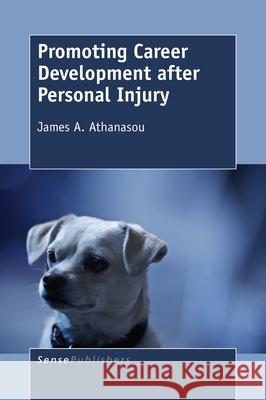Promoting Career Development after Personal Injury » książka
Promoting Career Development after Personal Injury
ISBN-13: 9789463008358 / Angielski / Twarda / 2017 / 238 str.
Promoting Career Development after Personal Injury
ISBN-13: 9789463008358 / Angielski / Twarda / 2017 / 238 str.
(netto: 419,90 VAT: 5%)
Najniższa cena z 30 dni: 425,63
ok. 30 dni roboczych
Dostawa w 2026 r.
Darmowa dostawa!
Promoting Career Development after Personal Injury is written for anyone who has professional contact with adolescents or adults that have a disability arising from injury. The text provides postgraduate students with a comprehensive introduction to career development for this specialised field. It covers the disadvantages commonly experienced in education and work by someone with a disability. The relevance of ability, interest and values for job choice is stressed. Assessment, guidance and counselling are outlined. Job placement and accommodation to the workplace are treated as key issues. This book is the second in a series of books and could be read usefully in conjunction with the author's previous Sense publication, Encountering Personal Injury (2016). However, there is no pre-requisite knowledge needed. The current text arose from a background of some 30 years' teaching, research and clinical practice in this field. Each chapter builds towards the satisfactory educational and vocational placement of a person. A total of 19 clinical case studies are used. This text is written in an informal, easy-to-read and light-hearted style. It will find applications wherever personal injury is encountered in special education, career development, vocational and rehabilitation psychology, rehabilitation counselling, social work, occupational therapy and physiotherapy.
piPromoting Career Development after Personal Injury/i is written for anyone who has professional contact with adolescents or adults that have a disability arising from injury. The text provides postgraduate students with a comprehensive introduction to career development for this specialised field. It covers the disadvantages commonly experienced in education and work by someone with a disability. The relevance of ability, interest and values for job choice is stressed. Assessment, guidance and counselling are outlined. Job placement and accommodation to the workplace are treated as key issues. This book is the second in a series of books and could be read usefully in conjunction with the author’s previous Sense publication, iEncountering Personal Injury/i (2016). However, there is no pre-requisite knowledge needed.ppThe current text arose from a background of some 30 years’ teaching, research and clinical practice in this field. Each chapter builds towards the satisfactory educational and vocational placement of a person. A total of 19 clinical case studies are used. This text is written in an informal, easy-to-read and light-hearted style. It will find applications wherever personal injury is encountered in special education, career development, vocational and rehabilitation psychology, rehabilitation counselling, social work, occupational therapy and physiotherapy./p











